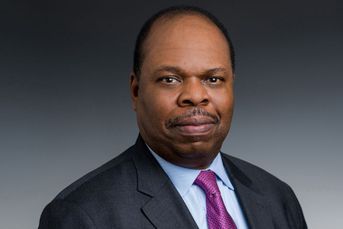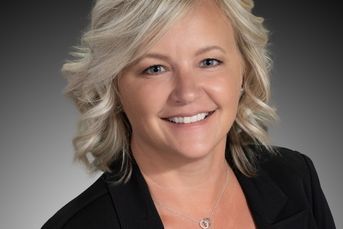Fee revenue surged at the largest IBDs last year

For more than two decades, the brokerage industry has touted its plans to shift to a fee-based business model, which is less volatile than the up-and-down cycles of sales of high-commission products.
Independent broker-dealers, so called because they pay advisers as independent contractors and not employees, continued to see a surge in revenue last year from advisers charging clients fees, a notable achievement for an industry that less than a decade saw the majority of its revenue derive from commissions on the sales of products.
Indeed, the rising tide in revenue from fees, which firms typically charge clients based on assets and before the start of a new quarter, was so strong among the largest independent broker-dealers that in 2021 fees comprised 54% of revenue from the top 25 broker-dealers in this year’s InvestmentNews survey. Meanwhile, revenue from commissions was 34% and other revenue, primarily generated from interest-rate spreads, was 12%.
Those InvestmentNews calculations don’t capture the entire IBD marketplace: They exclude firms that didn’t disclose individual revenue segments, and the list varies from year to year because some firms choose not to report.
But the shift by IBDs charging fees and looking more like the competition — registered investment advisers — can’t be overlooked. For more than two decades, the brokerage industry has touted how it was going to shift to a fee-based business model, which was less volatile than the up-and-down cycles of sales of high-commission products like variable annuities and nontraded real estate investment trusts.
“All I can say is, enjoy it while it lasts,” said Jonathan Henschen, an industry recruiter. “We could very well be entering a financial derecho, or windstorm, with the likelihood of bad news far outweighing good news as the Fed starts financial tightening in order to fight inflation.”
ACCELERATED FOCUS
Regulation Best Interest is accelerating advisory focus and making commission business increasingly difficult and bureaucratic to transact, Henschen added. “We are becoming an industry of everyone being focused on advisory as broker-dealer profit centers have positioned advisory business as their primary profit generator.”
It appears that shift has taken hold and recently accelerated during the Covid-19 pandemic. Last year, for the first time since InvestmentNews started its survey, the top 25 firms reported that fee revenue made up 50% of their total revenue on average.
Buoyed by more revenue on average from fees and last year’s roaring stock market — the S&P 500 posted a total annual return, including dividends, of 28.7% — the top 25 independent broker-dealers saw another milestone, for the first time tallying revenue of $33.9 billion, a 24.7% increase over 2020, when revenue among the group totaled $27.2 billion.
And last year’s revenue growth for the leading independent broker-dealers was welcome news for the industry as it struggled to maintain operations during the pandemic; a year earlier, InvestmentNews reported annual revenue growth for the top 25 firms of just 4.3%.
2021’s IBD results are almost the mirror opposite of the revenue breakdown for the leading IBDs in 2013, when commissions accounted for 52% of revenue and fees 34%, with so-called “other” revenue at 14%.
The sale of products for commissions has faced significant headwinds, industry executives noted, including discount brokers cutting commissions for some trades to zero starting in 2019 and a new regulatory regime from the Securities and Exchange Commission, called Regulation Best Interest.
“The shift to fee business has been 20 years in the making, right?” said Dennis Gallant, senior analyst with the Aite Group. “It’s not like it’s a new effort by the IBD industry, but the firms really ramped up fee-based business and assets five years ago. That’s when the Department of Labor’s fiduciary rule was hanging over them, and now Reg BI is adding to that.”
“And there’s also the competitive trends driving this, with the growth in the advice industry taking off on the RIA side of the market,” he said.
RIAs charge clients fees based on assets while broker-dealers, in the traditional model, charge commissions for transactions. Now a hybrid business model exists for IBDs, but advisers who charge clients fees on assets are clearly the most desirable for firms, Gallant said.
And smaller broker-dealers are still struggling with scale and economics in an industry that has seen intense mergers and acquisitions and consolidation over the past 10 years. “There’s more competition facing everybody,” he added. “The consumer wants financial advice but has more choices and options than ever.”
Firms weren’t the only groups benefitting in an outstanding 2021. Financial advisers at independent broker-dealers are thriving, too.
According to InvestmentNews data, last year financial advisers at six independent broker-dealers produced more than $500,000, on average, in fees and commissions, known as gross dealer concession or GDC in the industry. That’s three times the number of firms that reported annual average revenue per adviser above $500,000 in 2020.
The industry’s highest-producing financial advisers work under the roof of Commonwealth Financial Network, which has a platform that includes an RIA-only option for its advisers. Last year, Commonwealth Financial Network’s advisers, on average, produced $769,000 in annual revenue, an increase of 22.3% compared to a year earlier, when its advisers produced $629,000 on average.
“I remember the days when most firms were hovering at $200,000 of GDC per adviser, and now half a dozen are at more than $500,000,” said Jodie Papike, president of Cross-Search, a third-party recruitment firm. “That’s incredible. It shows what organic, annual growth has become for advisers who stayed the course over the past 10 years.”
And so far in 2022, despite the S&P 500 being down a little more than 8% as of the end of trading on April 11, the IBD industry could see a welcome boost to revenue from rising interest rates. That’s good news for the securities industry as a whole, which charges clients interest for borrowing on margin and captures the interest-rate spread on the cash clients hold in money market accounts.
In March, the Federal Reserve raised short-term interest rates by a quarter point, the first Fed rate hike since 2018. More rate hikes are anticipated.
“We’ve updated our economic models due to interest rates and because of positive rates for net interest margin,” said John Pierce, head of business development at Cetera Financial Group.
Learn more about reprints and licensing for this article.








